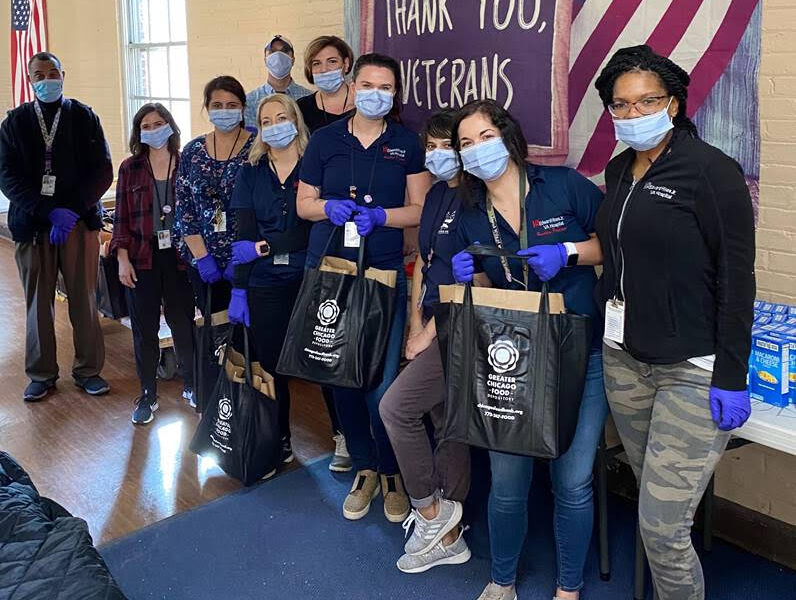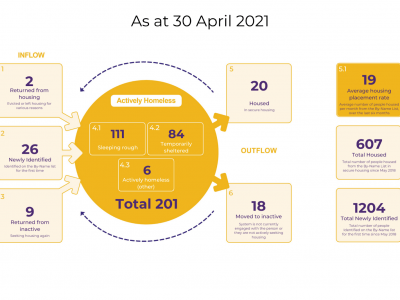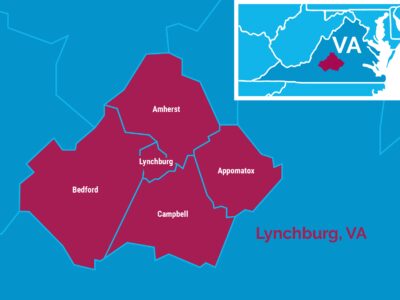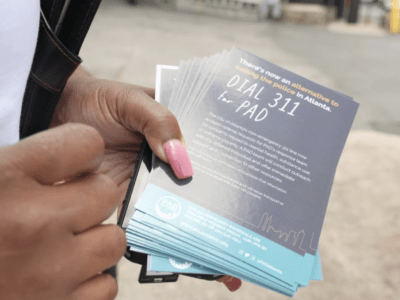The Suburban Cook County team, which joined Built for Zero in 2015, has managed the “COVID curveball” lobbed their way by strengthening their case conferencing and resource sharing, increasing outflow through housing placements, and implementing many targeted and impactful strategic improvements to the way they work.
“When that COVID curveball hit, we were up to bat. We were swinging away,” said Kerry Thomas, Coordinated Entry Specialist at the VA in Cook County. “And we already had a system in place that allowed us to adjust.”
Tailoring responses by region
Suburban Cook County has a foundation of practices, systems-thinking, and improvement that allowed them to better respond to COVID-19 pandemic, during which they applied and adapted these practices in a new context.
One such skill that shone in the midst of the crisis was their case conferencing practice, a weekly, problem-solving meeting, that brings key participants from across the county together to collaborate on ways to remove barriers to more quickly house clients on their quality by-name list. More specifically, the chronic team aimed to adapt their work to address the specific challenges of their community’s geography and distribution of resources and clients.
Suburban Cook County is composed of three large areas — the south, west, and north suburbs, with Chicago toward the east. These three areas are part of the same Continuum of Care but come with significantly different resources and challenges, which the Built for Zero team has learned to navigate while still working as one cohesive unit.
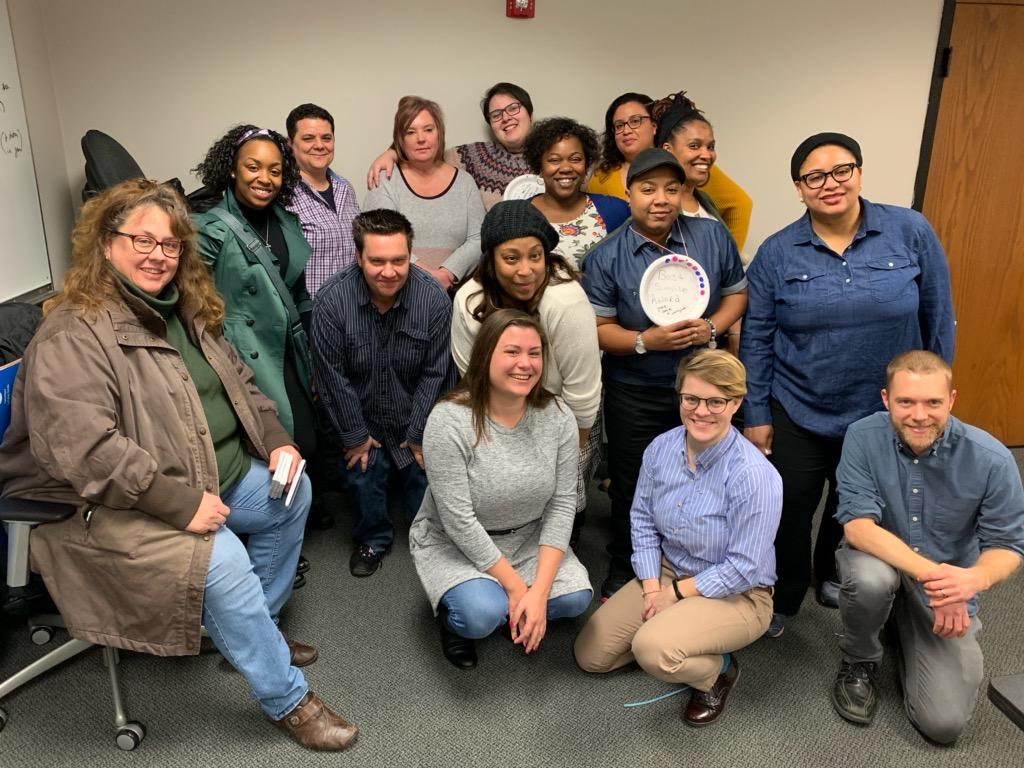
Javon Harris, Director of Supportive Housing, Beds Plus Care, works with the permanent supportive housing line of service, and she has seen firsthand the effect of targeted meetings for the three different regions of Cook County, which each face unique challenges. “I’m a huge fan of case conferencing,” Harris said. “It helps to work through those issues, especially when barriers are different from agency and town-to-town.”
Separating out certain agency meetings by region has allowed the Suburban Cook County team to concentrate on both on the real-time data and racial equity measures of each. “Our regions are very distinctive in terms of how many chronically homeless people are in each region, what are the housing options, what are the racial demographics of the region,” explained Kathryn Primas, CoC Program Coordinator, Alliance to End Homelessness in Suburban Cook County. “It’s going to be more focused by the regions so we can actually come up with strategies to implement by region.”
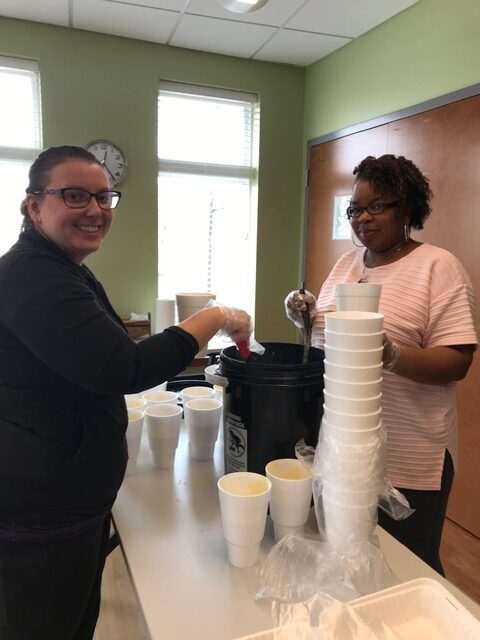
Utilizing new and existing resources
Throughout the COVID-19 pandemic, the community has utilized local hotels as safe, non-congregate shelter for some of their most vulnerable neighbors, and those who may need quarantine or isolation if they have been exposed to or are recovering from COVID-19.
The team used this moment to strengthen their outreach efforts as they sought to not only help their neighbors get to safety amidst the pandemic, but to also continue on to securing permanent housing.
“Receiving the CARES Act funding and some additional funding that we’ve gotten from the state of Illinois has put us in a pretty good position to finally get some movement on our by-name list, because I do think we may have access to enough housing resources to really get people off the list,” Primas explained. “And we have additional staff so that the intensive case management can be provided to connect people to the resources they need.”

Thomas also stressed the significance of having a collaborative relationship so veterans have access to community options as well as those from the VA. “If we know that if they’re not eligible for things through VA, we’re still tracking them on the veteran by-name list and still coordinating with the non-veteran side of things to make sure that they’re matched to resources.”
“We had started to introduce this idea to categorize clients,” said Primas, where they put clients in different groups if they were the most vulnerable clients, seniors, or long-stayers, for example. “That has definitely worked with getting discussion going and people sharing resources in the meeting that maybe some other people at different agencies were not aware of.”
Leveraging a by-name, user-centered approach
Cook County team members have changed the way they structure their case conferencing and navigate their by-name lists to adopt a more user-centered approach, learning to ask deeper questions for every client and focusing on specific action items rather than general updates.
“Collaboration and case conferencing was the biggest change.”
Kathryn primas, CoC Program Coordinator, Alliance to End Homelessness in Suburban Cook County
In order to hone in on the resources available to their veteran population, the Built for Zero team created a veteran-only quality by-name list, helping their meetings have a clear set of clients to focus on each week in order to more quickly get them housed. “[Working with] the veteran population has been amazing — I’ve seen a major change. The veterans move through the process so quickly,” Primas said. “Collaboration and case conferencing was the biggest change,” she said.
For example, the veteran team added to their by-name list the number of days a veteran experiencing homelessness was in the housing search. They were startled to see that some remained in the housing search phase anywhere from 200 to 400 days. “The shock value of having an actual number like that was a big motivator for our team to heavily focus on those veterans each week during case conferencing,” said Thomas.
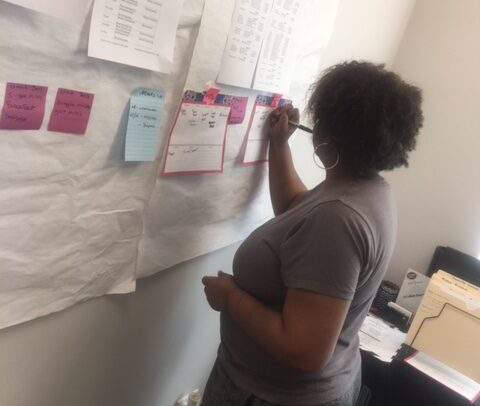
They sought to not let their clients linger in that search for long, making concerted improvements to their housing navigation part of the system. “The top four people on our list right now all have housing plans and should be housed within the month,” she explained.
Mario Martinez is an Entry Point Manager for South Suburban PADS, an organization originally focused on serving mainly the south region of Cook County. Having more resources and connections available due to cross-team collaboration has allowed him to keep the client at the center of the work. “It’s opened up all of our eyes to see the different options for housing,” he said. Now, Martinez can approach clients and say “‘Your doctor is closer to the north suburbs, have you ever thought about living out there?’” he explains. “They never thought to move up there, because they were from the south.”
This focused improvement work for the veterans in their community experiencing homelessness has already created a culture change, resonating to the team focused on chronic homelessness as well. Martinez emphasized that having open communication with all of their clients was key. “With vets, we noticed if you ask a question a certain way, they open up. We’ve learned and been trying to do that with our other clients and noticed it works better if you say things in a certain way,” he said. “You don’t know their background until you actually sit down and talk to them,” Martinez said.
Targeting move-in dates to structure the work
“They got there by doing focused case conferencing to increase their housing placement rate. They determined that they had to house 18 people a month to get there — and they succeeded.”
Habiba Rotter, BFZ Improvement advisor
Another change idea the Suburban Cook County team has implemented is setting target dates by which their clients on the by-name lists will move into their new home. “Our chronic case conferencing team has started to set deadlines or a target date for move-in,” said Primas, which helps both the client and providers. “If I know that by December 1, I need to have this done by then…it kind of gives me some sort of structure to my activity.”
While it may seem like such a simple adjustment, the impact can be significant. “Even just introducing that one thing was starting to just bring structure to the process,” Primas said.
This team was one of the first in the Built for Zero Collaborative to test this thinking and implement target move-in dates, which proved to be an efficient improvement. “Cook County set a goal to reduce the number of veterans experiencing homelessness on their quality by-name list from high 50s in June down to 25 in December,” said Habiba Rotter, Built for Zero Improvement Advisor for Suburban Cook County. “They got there by doing focused case conferencing to increase their housing placement rate. They determined that they had to house 18 people a month to get there — and they succeeded.”
The target ahead: functional zero
“We’re super excited now to be in this last mile as a community and have this last push.”
Kerry Thomas, Coordinated Entry Specialist at the VA in Cook County
Through these systems changes and concerted action, Suburban Cook County has been able to continue to drive reductions and make progress in the midst of the COVID-19 crisis.
“I think we’re kind of in a good position right now to make some progress that unfortunately we would not have been in if the pandemic had not happened,” Primas said.
If they continue to maintain their housing rate, Suburban Cook County is on track to reach functional zero for veterans in the summer of 2021. This achievement will mean that the number of veterans experiencing homelessness is less than the number of veterans the community proves it can house in a month. “We’re super excited now to be in this last mile as a community and have this last push,” said Thomas. Due to added flexibility from the federal government, more veterans are now eligible for resources and vouchers to secure housing. “I think that will be the thing that gets us there,” said Erin Mangano, Homeless Program Clinical Manager.
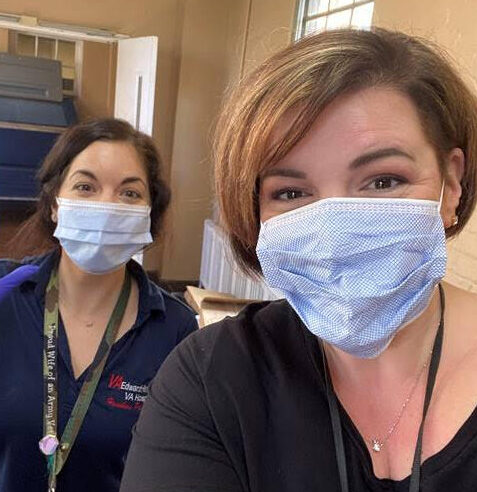
Seeing other Built for Zero communities reaching their functional zero goals has served as motivation for the Cook County team. “It inspired us in that we saw it was achievable,” said Thomas.
“It is possible, but it takes a community,” Harris said.
